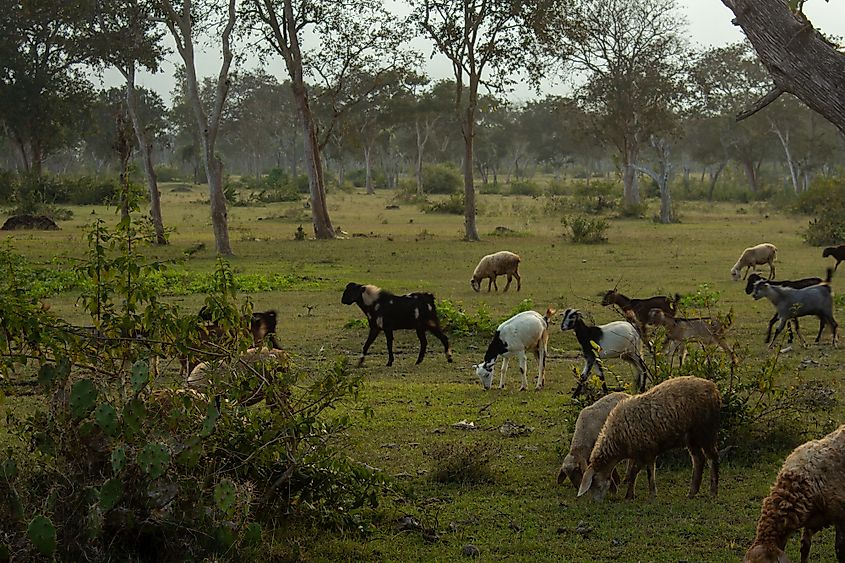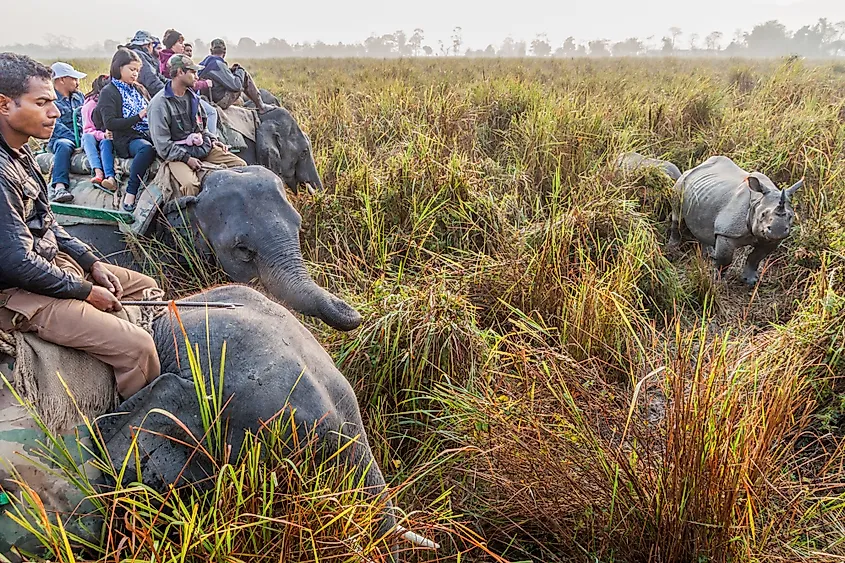Why People Management Is Important In Wildlife Conservation: An Expert Opinion

India's national parks protect and preserve incredible biodiversity. India is internationally recognized as a highly ecologically diverse nation with habitats ranging from alpine to tropical and marine ecosystems. These wild habitats also exhibit high levels of endemicity. India's wealth of flora and fauna sustains her enormous human population. It also bears global significance in maintaining stable populations of species like Bengal tigers, Asiatic lions, one-horned rhinos, etc., that are nearly absent in other parts of their historic range. Thus, the national parks of India, protected areas with the tightest regulations in the country, are of immense importance to India and the rest of the world. The maintenance of the sanctity of these vital habitats is no easy feat and demands the participation of multiple parties and massive funding. A multitude of threats exist and their mitigation measures necessitate innovative thinking and effective policies.
To learn more about the management of India's national parks, World Atlas speaks to an expert in the field.
Sachikanta K. Chakrabarti, a retired Indian Forest Service Officer who served as the former Principal Chief Conservator of Forests & Chief Wildlife Warden, Karnataka, responds to some of the questions related to the vital issues facing India's protected habitats today and explains how human population management is vital to saving wildlife.
What Are The Objectives Of Establishing A National Park?

Image: A herd of elephants at the Kaziranga National Park, Assam, India.
National Parks have been essentially designed to respond to the cardinal need for sustenance of the amazingly complex ecosystems of the universe, consisting of individual genes of a wide array of diverse species. There is a constant interaction of biological diversity with the physical environment of the specific area. It is a conservatory of a biome, a complex biotic community of plants and animals prevailing in the area under variable climatic conditions. A large gene pool consists of a greater genetic variability with a higher possibility of sustenance.
National Parks are, therefore, set aside with the objectives of ensuring the protection of the ecological integrity of the specific ecosystem with their gene pools, total exclusion of human interference of the inviolable privacy of the sanctum sanctorum of all life forms of nature, and permitting only scientifically and environmentally compatible visits to the parks. Thus, the maintenance of the sanctity of the parks will require a substantial sum of financial resources if they are to be reserved for retention in their pristine forms.
Fringe Dwellers Of National Parks: What Are The Dynamics And Issues Involved?

Image: Sheeps and goats grazing along the forest area in Masinagudi, Mudumalai National Park, Tamil Nadu - Karnataka State border, India
Forests and particularly, National Parks have to almost always consider managing the population residing in the peripheral zones for generations. This population invariably consists of the poorest of the poor of the society and tribals who depend largely on the forests and water resources contained therein. So, while the necessity of limiting human interference in these protected areas is a prime consideration, the sustenance of these most impoverished sections of the society should also be given its due recognition. A very large percentage of farmers are small and marginal ones and a sizeable proportion of them are landless and reside close to these National Parks and forests. We have to also consider the fodder requirement of the huge cattle population of these farmers that is essential for their livelihood. Though the demand is mostly met with from inferior buffer forests, the pressure on National Parks remain.
There have been numerous projects all over India with Joint Forest Management to generate enough forest produce to meet the requirement of the society like small timber, firewood and fodder from areas outside the regular Reserve forests to augment availability. Social Forestry played a very great role in ameliorating these problems of shortage of minor forest produce but the ultimate results fall far short of the continually growing demand. About 400 million fringe forest dwellers and a huge proportion of the 450 million cattle do exert intense pressure on Reserve forests as well as National Parks.
National Park management plans thus have to consider the economy of the fringe dwellers as well. Unfortunately, the budget allocations on the Forestry Sector in all Five Year Plans have been a dismal 1% of the entire budget, of which a very small proportion gets allotted to 104 National Parks and 551 Wildlife Sanctuaries in India. The 50 Tiger Reserves and areas under Elephant Reserves, however, get separate funding for their special treatment. This situation of inadequate funding has resulted in enhanced tourism activities in the National Parks for boosting available resources for scientific management. So in effect, there is a dichotomy of management principles. On one hand, we want the gene pools to be free of interference while on the other we are forced to permit tourism to overcome our financial constraints inviting more footfalls and consequential disturbance to biodiversity.
Tourism: What Role Does It Play In National Park Management?

Image: Tourists observing the Indian rhinoceros during elephant safari in Kaziranga National Park, Assam, India.
Tourism, mainly ecotourism, pumps in huge sums of money spent by visitors which support management needs like fire protection, tackling of menacing weed invasion, safeguarding threatened species population and countering the threats of climate change. Besides, it augments monetary resources creating hundreds and thousands of job opportunities throughout the length and breadth of the nation.
The other positive feature of ecotourism is the pleasure of viewing and reflecting upon the serenity of the hills and mountains and the streams cascading downhill through the valleys, which also elevates one’s understanding of the need of water conservation in catchment areas. Environmental needs of the world get significantly impregnated in the mindset of visitors in coming across nature in its original form. A visit gives a practical demonstration of the ambiance of nature and the stunning variety of floral and faunal assemblage.
Tourism has practically become a cash cow under the circumstances and resorts and facilities are blooming all over with increasing challenges of uncontrolled visitations. But the paucity of financial investment to support antipollution measures makes it obligatory to seek additional resources. But the integration of tourism with park management results in generating not only a renewable source of this much-needed fund but is always a better alternative to destructive industries in close proximity to the parks posing significant threats to biodiversity. The local economy also gets substantially benefited from tourism.
What Are The Major Issues Facing India’s National Parks In The Present Day?

Image: Two Rhinos facing each other in Kaziranga National Park, Assam, India.
Farmlands and forests have been the obvious choice for land for massive industries like mining, plants, and machinery, communication, and infrastructure as developmental projects and sizeable employment sources. Unfortunately, most of our mineral resources are concentrated in areas with remarkable floral and faunal diversity. We have nearly 40,000 species of plants and about 90,000 species of birds and animals. If we consider all forms of flora and fauna the number will be staggering. And all these forests are the main source of water and recycling of oxygen.
Studies indicate that forests of India with the sole exception of the evergreen forests are becoming drier which does adversely affect the nation’s hydrological cycle. Any instability in our Himalayan and Western Ghats ecosystems will have very deleterious effects on several hydrological cycles in the Indo-Gangetic plain and Peninsular India. There is thus the added need to ensure that our National Parks and forests are undisturbed and the integrity of them remains intact.
So, What Strategies Need To Be Adopted To Address These Issues?

Image: A male leopard in the Nagarhole National Park, Karnataka, India.
Conservation of National Parks is approached either in a Preservative/Prohibitive form or a Protective form. While in the former mode all human activities are essentially unacceptable save responsible ecotourism, the latter considers inclusive management with the people around the immediate vicinity of the park. There is a growing trend to accept the latter in principle as an important link between the environment and the economic wellbeing of the fringe area population. An extremely cautious approach with a balanced mix of conservation and development is the wisest solution so that we do not end up in a position of failing to achieve either. Unfortunately, over the years a trust deficiency on the management on the part of the fringe dwellers has crept in so much so that they, by and large, believe that even in times of natural calamities nature is the only savior: when in distress look up to nature. Park management may not assist them suitably in distress. Our strategies for conservation of biodiversity in National Parks must take due cognizance of socio-economic and cultural factors of local communities neighboring the Parks as much as the scientific study of plants and animals within the Park. Extensive studies on conservation of biodiversity in National Parks have indicated that successful conservation is largely related to community-based conservation approaches. Protection of environment is essential for sustainable development. Quality air, water, and land must be made available to tomorrow’s citizens.











